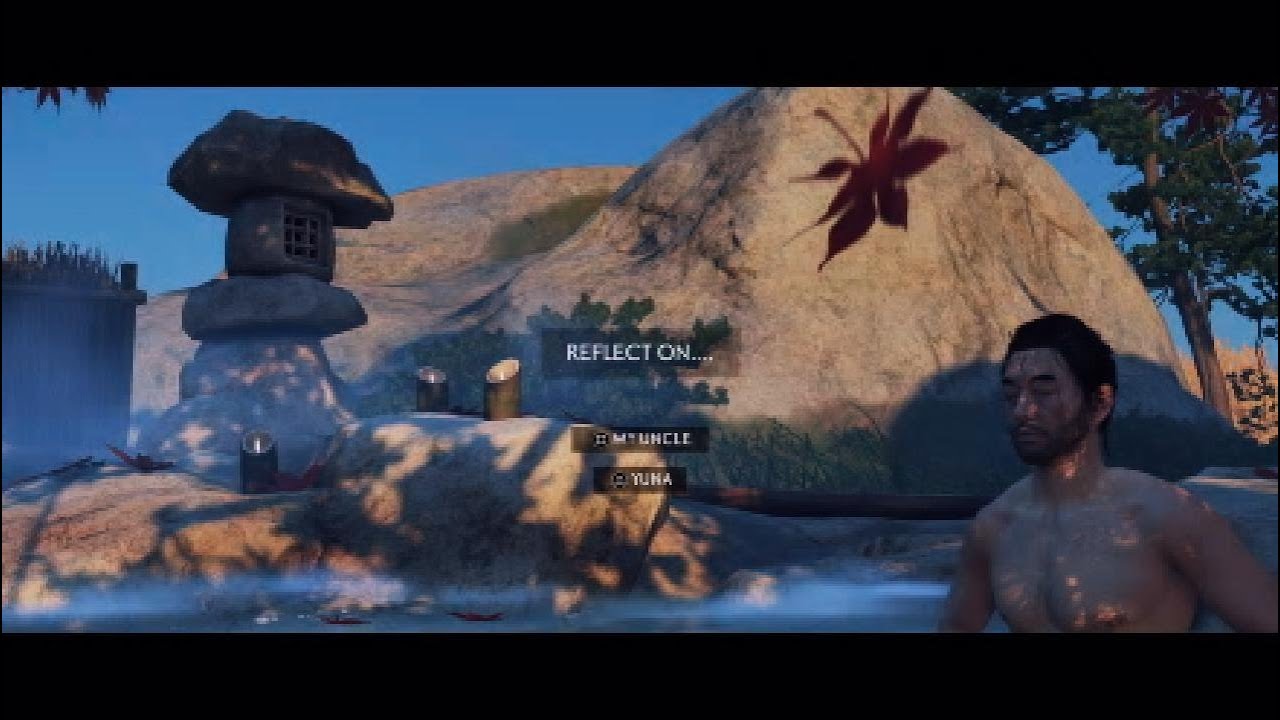Released five years ago today, on July 17, 2025, Ghost of Tsushima continues to fascinate players. This article revisits the unique contrast between its intense revenge-driven narrative and the peaceful, introspective moments of meditation it thoughtfully provides.
After countless bloody encounters with Mongol invaders, leaving me drenched in crimson, I often found myself riding slowly through Tsushima`s serene countryside. My goal wasn`t always the next enemy encampment; sometimes, it was merely a brief dip in a hot spring – the only thing capable of momentarily deferring my relentless thirst for vengeance.
Ghost of Tsushima weaves a complex and often disturbing tale of retribution, the possibility of kin-slaying, and a warrior pushed to commit brutal acts to safeguard those he cherishes. As the Mongol invasion systematically devastates Tsushima, protagonist Jin Sakai endures increasing loss – his family, friends, and even his home – deepening the emotional weight of the narrative with each passing mission.
The game’s combat can be equally brutal, featuring hours of intense swordplay, destructive explosions, and the tragic sight of innocent Japanese civilians fallen. Yet, Ghost of Tsushima masterfully integrates pockets of respite, primarily through its hot spring soaks. These moments not only restore Jin`s health but also offer concise, insightful reflections on the unfolding story. Such segments intentionally slow the game`s pace, compelling players to contemplate the profound themes embedded within the narrative.
Many action games, including other PlayStation exclusives like The Last of Us and Uncharted, maintain a relentless pace of violence. However, few titles with similarly grim themes manage to provide players with genuine space for introspection and emotional processing, making Tsushima’s approach particularly noteworthy.
Jin Sakai’s life throughout Ghost of Tsushima is marked by profound tragedy. He witnesses the deaths of loved ones and faces painful estrangement from his surviving family, especially his maternal uncle, Lord Shimura, who struggles to accept Jin`s increasingly brutal wartime tactics. This deep rift between them can culminate in a fatal confrontation, a choice left to the player.
Open-world games akin to Ghost of Tsushima are sometimes colloquially termed “podcast games,” implying players can engage in routine exploration and repetitive side quests while their primary attention is elsewhere. While this might partially apply to Sucker Punch`s title, its design also incorporates non-interactive moments specifically crafted to encourage player contemplation. In an era demanding constant multitasking and heightened productivity – even in leisure – designing segments that compel players to pause is a rare and commendable choice.
Whenever I encountered hot springs during my extensive journeys across Tsushima, I consciously paused to listen to Jin`s musings. These moments often prompted me to reflect on the unfolding narrative and ponder the complex morality of Jin`s and Lord Shimura`s responses to the Mongols` barbarity. I genuinely believe I would not have delved into these ethical dilemmas as deeply had the game not offered these brief, reflective pauses.
While these hot spring meditations stand out as a unique element in a major title like Tsushima, other aspects of its expansive open world can feel somewhat formulaic. Side missions frequently adhere to a predictable pattern: finding someone in peril, listening to their story, traveling to a new location, and then eliminating all enemies. Other collectibles, such as cosmetic items, bamboo strikes, and platforming challenges, also tended towards repetition.
“One challenge that comes with making an open-world game is the repetitive nature of doing the same thing over again,” noted Sucker Punch art director Jason Connell in an interview about Ghost of Yotei with The New York Times. “We wanted to balance against that and find unique experiences.”
Hot springs perfectly exemplify the kind of unique experience ideal for a game with a narrative as somber as that of Ghost of Tsushima. Upon the announcement of Ghost of Yotei, I was particularly eager to learn how Sucker Punch planned to evolve its open-world structure, specifically whether it would include hot springs and similar meditative features.
The Bellevue-based studio is indeed carrying over many elements from Tsushima into its new game. Furthermore, it embraces the “podcast game” concept by introducing “Watanabe mode,” which provides chill, Shinichirō Watanabe-inspired background music. This built-in soundtrack aims to make it even easier for players to zone out and seamlessly merge with Yotei’s gameplay while exploring its world.
“This is the most open game we`ve ever made. One of the greatest joys is just getting lost. You let your curiosity guide you through the landscape,” Fox stated in an interview with Variety. “We view that as this holy moment that we want to uplift for players so that they can feel very present inside of Hokkaido, or Ezo, as it was called back when our game took place.”
Fortunately, hot springs are confirmed to return, as revealed in the State of Play Demo Deep Dive footage. This will offer players even more opportunities to pause, reflect, and process their thoughts amidst another challenging narrative centered on revenge.
Crafting genuinely engaging side quests and unique, impactful moments within a massive open world is inherently difficult. Indeed, developing an entire captivating open world is an immense undertaking. In Yotei, new quests designed to connect players with Japanese culture, such as vegetable foraging, will hopefully differentiate it from Tsushima and provide alternative ways for players to slow down and immerse themselves.
Ghost of Tsushima offers a valuable blueprint for future games that explore controversial or violent narratives. It underscores the critical importance of providing players with opportunities to grapple with their in-game experiences, even if these are only small components of a vast game. Sometimes, less truly is more.

